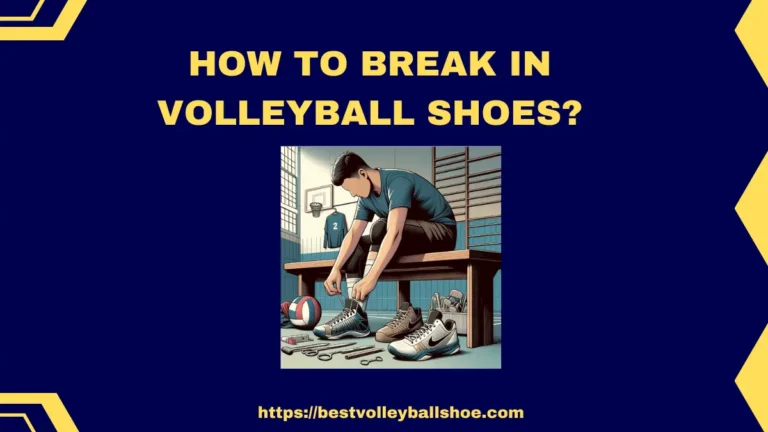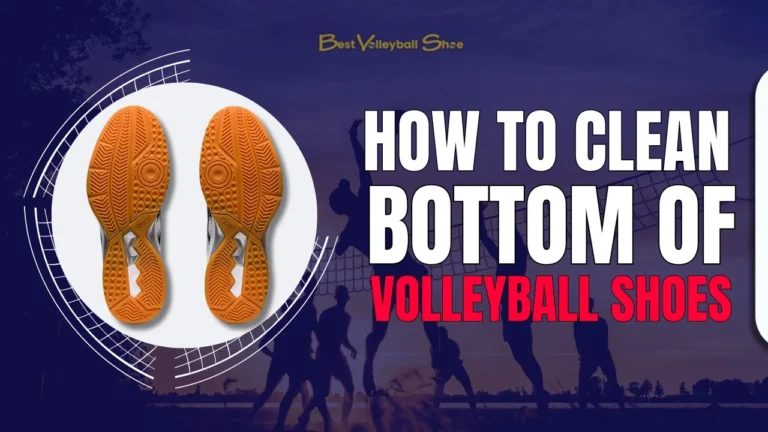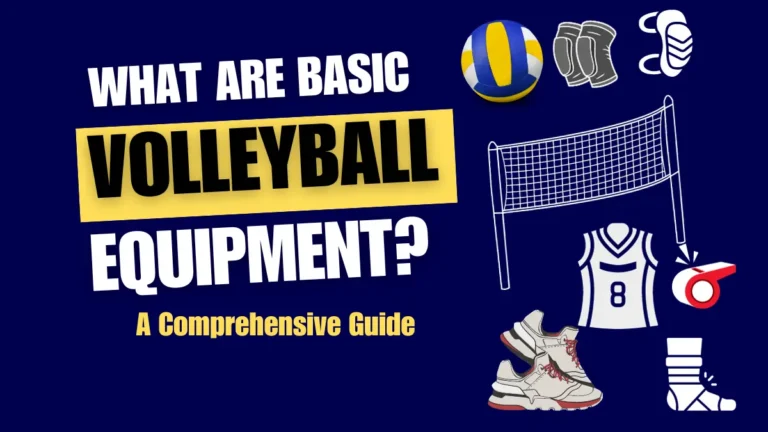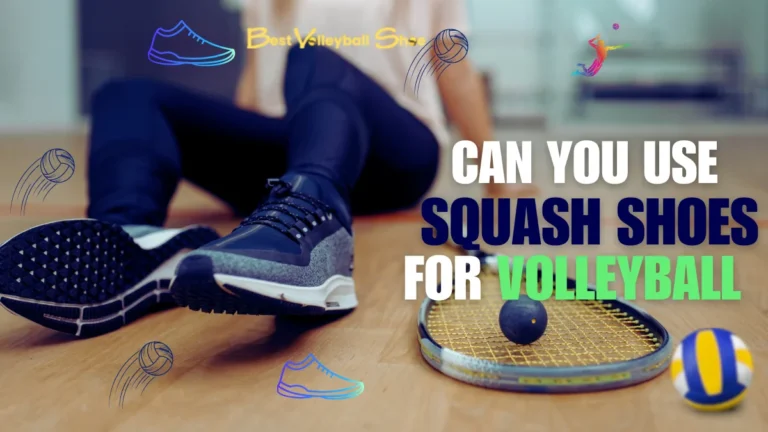What is a Dig in Volleyball? A Beginner’s Guide to Digging
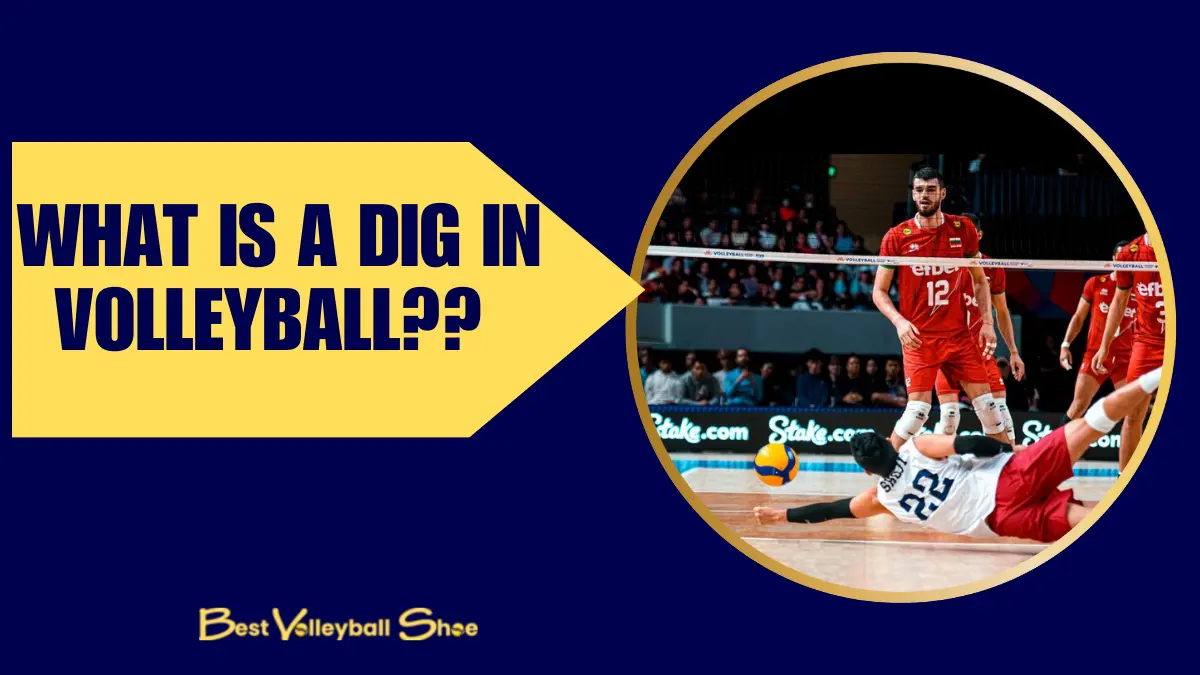
You are required to keep your nerves active and must prevent the ball from hitting the floor which is coming from the opponent’s side. Success is only possible when you move quickly and agilely to save the incoming spike from touching the ground.
As a dedicated volleyball player, I can confidently say that proficiency in digging is possible when you have good practice, thorough preparation, and knowledge of all the techniques used in the digging process.
If you don’t know what is a dig in Volleyball, the basics of digging, how to position yourself correctly, how to read the hitter, and much more, then read this article to the end. It provides all the information related to volleyball digging.
What is a Dig in Volleyball and Types?
In volleyball, a dig is when a player tries to save the ball after the other team hits it very hard. When the other team hits the ball over the net, the defending team must move fast so the ball does not fall on their side of the playing area. The dig is the first line of defense against an attacking hit.
To perform a dig, players must position themselves low to the ground with their arms extended and hands clasped together. The goal is to “dig” the ball up and forward, preferably to a teammate who can set up an attack.
Mastering the dig is crucial, and it all begins with the right posture. Your stance influences every type of dig. Start by positioning your legs apart, lowering into a squat, and bending your elbows.
Here are five different types of digs:
1. Stationary Dig: This is the simplest dig. You maintain your posture while the ball comes directly to you. Stay low and defensive, and aim to dig the ball 20 feet high and five feet off the net.
2. Crossover Dig: When the ball is hit away from you, use a crossover step to stay on your feet. Follow the ball and dig it high, maintaining the target of 20 feet up and five feet off the net.
3. Run-Through Dig: For balls hit far away, whether off a block or a tip, sprint towards the ball. Once you reach it, create a stable platform and dig it high, aiming for 20 feet up and five feet off the net.
4. Collapse Dig: This is an emergency dig for balls hit very far and fast. Dive forward, extending your body, and get your hands under the ball to dig it up.
5. Extension Dig: Another emergency dig for when the ball is too far to use both arms. Stretch out with one arm, sprawling to reach the ball and dig it up.

Why is the Dig Important?
The dig is important in volleyball because it helps keep the ball going and gives the defending team a chance to get points. Without a strong defense, the attacking team would have a significant advantage and could easily score points.
In addition to preventing the other team from scoring, the dig allows the defensive team to transition into an attacking position. By successfully digging the ball, the team can pass it to a setter, who can set up a spike or another attacking hit.
How Digging Help in Volleyball?
In volleyball, digging is a very important part of the game. It stops the other side from getting a point and lets your side try to get it instead. How it helps in other ways is discussed in detail.
Stopping the Other Team from Scoring
It can be hard to defend against hard and speedy spikes. This is where digging comes in. Digging is when a player mostly libero gets control of the ball after the other team hits or spikes it, so they can’t score a point. Players can stop the other team from scoring by doing a good dig and keeping the ball in play.
Better for Back-Row Players
Many players in the back row are good at digging, which is one of the most important things they do. Their main job is ensuring their team can still play the ball when the other team hits it hard.
As a back-row player, you must be quick, have good reflexes, and know how to use your arms or any other body part to control where the ball goes when you dig.
Making Chance to Score
Digging gives the team a chance to score. When a team does a good dig, they can take control of the ball and start playing offense.
This change from defense to offense happens quickly, so the team’s front-row players can get in the right spots to score. If the team doesn’t do a good dig, they will miss these important chances to get points.
How to Perform a Dig in Volleyball
After learning the different types of digging, lets know how to perform a successful dig; you can follow the following steps:

Different Ways of Digging in Volleyball?
In volleyball, a dig is an important defensive move that lets players stop hard hits and control the ball to keep the game going. This part will talk about the five most common types of digging in volleyball. It will show how players can use different moves and skills to defend against strong attacks.
1. Using Your Arms to Dig
The most common move in volleyball is the forearm dig, also called the bump. This is when players use their forearms to get and control the ball.
Players put their wrists together to make a flat surface and hit the ball with the front of their forearms. This move gives them stability and control to send the ball to their teammates and keep the game going.
2. Using Your Hands to Dig
Even though the hand dig isn’t used as much as the forearm dig, players can do it with their hands. Hand digs are usually used when the ball is higher or needs more gentle control.
Players cup their hands with their fingers to do a hand dig and bend a little to make a bigger area to hit the ball. Hand digs need good hand-eye coordination and control to send the ball where you want it to go.
3. Diving to Dig
A diving dig is a cool defensive play where players dive to reach and control a ball that’s too far away to get to normally. To do this, players must lay their bodies flat on the floor, raise their feet, and push themselves towards the ball.

4. Rolling to Dig
A barrel roll dig, also called a roll dig, is a special way to dig low, fastballs that are hard to reach with your hands or arms.
When athletes perform this move, they lean sideways and tumble their body while rotating. They utilize their side area, shoulder, and upper arm to strike the ball. The roll dig is especially good for defending against sharp and fast spikes.
5. Digging Over Your Head
The over-the-head hit, or the high hit or serve catch, protects against high tosses that drift slowly. It involves using both hands to make a platform above your head to get the ball. You must use your fingers to hit the ball to do this dig, almost like you’re setting it.
To do an overhead dig well, it’s important to bend your knees to make power and push the ball up. Using fingers gives you more control to send the ball to the setter, but getting good at this move takes practice.
Thus, by getting good at these different dig techniques, players get better at defense and help their team do well in the exciting game of volleyball.
Tips for Improving Your Dig
Like any skill, the dig requires practice and repetition to master. Here are a few tips to help you improve your digging technique:
Last Words!
The dig is a fundamental skill in volleyball that every player should master. By understanding what a dig is, why it’s important, and how to perform it correctly, you’ll be well on your way to becoming a stronger defensive player.
Remember to practice proper form, work on your footwork, communicate with your teammates, and not be afraid to dive for the ball when necessary. If you work hard and keep trying, you’ll soon be great at digging the ball
Frequently Asked Questions
What is the purpose of a dig in volleyball?
A dig in volleyball is meant to stop the ball from touching the floor on your team’s side after the other team hits it over.
What part of the body is used to perform a dig?
When trying to hit the ball before it touches the ground in volleyball, you should use the part of your arms between your wrists and elbows to bump it. The arms should be extended forward with the hands clasped together, forming a flat surface to “dig” the ball up and forward.
What is the proper body position for executing a dig?
To execute a proper dig, players should get low to the ground by bending their knees and lowering their hips to help them keep their balance. It also lets you move fast in different ways, like side-to-side or forward and back.
How can players improve their digging technique?
To improve their digging technique, players should practice proper form, work on footwork, communicate with teammates, and not be afraid to dive for the ball when necessary.
When should a player dive for the ball while digging?
Players should dive for the ball when it is the only way to reach and dig it. This usually happens when someone hits the ball way off to the left, right, or back of the person playing.
